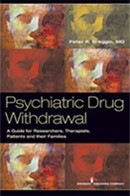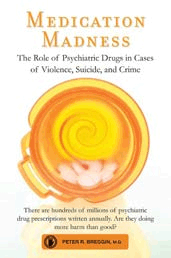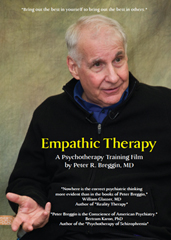International Journal of Risk & Safety in Medicine 22 (2010) 89-92. Peter R. Breggin Abstract: Electroconvulsive therapy (ECT) and the machines that deliver it have never been tested for safety and efficacy in order to receive approval from the FDA. The American Psychiatric Association and ECT advocates protested when the […]
Read More
“Electroshock therapy and brain damage: the acute organic brain syndrome as treatment,” The Brain and Behavioral Sciences 7 (1984) 24-25. electroshocktherapy.pbreggin.1984.pdf
Read More
“ECT Damages the Brain: Disturbing News for Patients and Shock Doctors Alike.” Ethical Human Psychology and Psychiatry, 9, 83-86, 2007. ect damages the brain.pdf
Read More
Despite ongoing controversy, there has never been a large-scale, prospective study of the cognitive effects of electroconvulsive therapy (ECT). We conducted a prospective, naturalistic, longitudinal study of clinical and cognitive outcomes in patients with major depression treated at seven facilities in the New York City metropolitan area. Of 751 patients […]
Read More
Breggin, PR. (1998). International Journal of Risk & Safety In Medicine, 11:5-40. Electroconvulsive treatment (ECT) is increasingly used in North America and there are attempts to further its use world-wide. However, most controlled studies of efficacy in depression indicate the treatment is no better than placebo, with no positive effect on […]
Read More
Readings: A Journal of Reviews and Comentary in Mental Health, March 1992. Dr. Breggin reviews and comments upon the 1990 Task Force Report of the American Psychiatric Association, “The Practice of Electroconvulsive Therapy: Recommendations for Treatment, Training, and Privileging.” thereturnofect.pbreggin.1992.pdf
Read More
Psychopharmacology Bulletin 22:476-479, 1986. Because ECT always produces an organic brain syndrome, the proper question, Breggin states, is not “Does ECT cause braind damage and dsyfunction?” but rather “How complete is recovery from this trauma?” neuropathologyand.pbreggin.1986.pdf
Read More
Electroconvulsive Therapy, Consensus Development Conference, NIMH, June 10-12. ECT always produces some degree of immediate brain damage and mental dysfunction, and frequently the patient never fully recovers. Permanent brain damage from ECT is demonstrated through clinical evaluations, psychological tests, EEG studies, CAT scans, human autopsy studies, and research on the […]
Read More
Behavior and Brain Sciences 7:24-25, 1984. electroshocktherapy.pbreggin.1984.pdf
Read More
Divergent Views in Psychiatry, M. Dongier and E. Wittkower, editors. Harper and Row, Hagerstown, MD, 247-271, 1981. Examines the relation between the “therapeutic” effects of electroshock and the damage it does to the brain. disablingthe.pbreggin.1981.pdf
Read More





